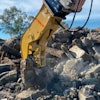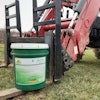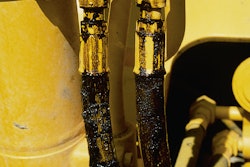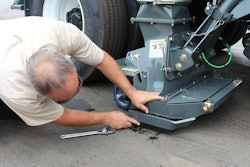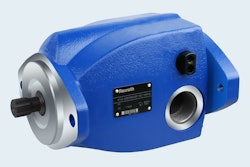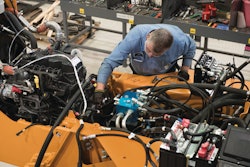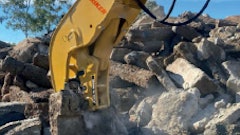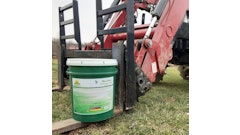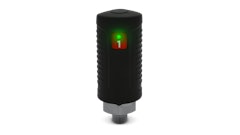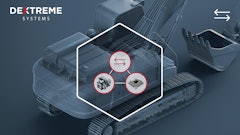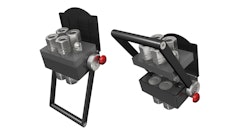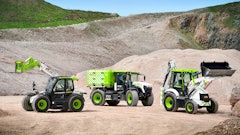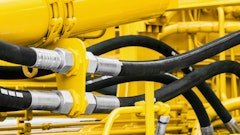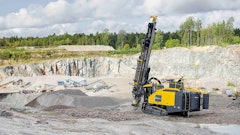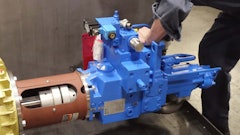This article is part 2 of a 2 part series. Part 1 focused on best practices for a hydraulic system preventive maintenance program.
The first line of defense in reducing failure of a hydraulic system is to incorporate contamination measurement and control protocols as an integral element of your Preventive Maintenance (PM) program. This is not to suggest that your shop has to be a clean room; the goal is to recognize the sources of contamination and ways to reduce them.
Contamination
Contamination, as with failures, comes in many forms, the most common of which include:
- Built-in contamination from the manufacturing and assembly processes includes debris, weld spatters, casting sand, paint, pipe sealant or fibers from cleaning rags.
- Natural contamination is the particulate matter that’s present in hydraulic fluid before filtration. Production, packaging, transport and distribution may all be sources of this type of contamination. Pre-filtering hydraulic fluid before adding it to your machines' sump is highly recommend. Without pre-filtration, you risk introducing contaminants to your hydraulic system. Unless you take the (highly recommended) step of pre-filtering your hydraulic fluid before adding it to your machines’ sump, you risk introducing contaminants to your hydraulic system.
- Ingressed contamination is introduced via air breathers, cylinder rod seals, wiper seals, component seals or poorly fitted covers, to name a few potential paths. These contaminants can’t be 100 percent avoided, but there are aftermarket solutions to reducing them.
- Generated contamination is the result of particles generating bigger particles. Abrasion, cavitation, corrosion, erosion and fatigue resulting from contact between moving parts are all examples of the effects of this type of contamination.
- Catalytic contamination refers to the presence of non-solid contaminants, chiefly water, air or heat, that react with the other particulates present in the hydraulic fluid. For example, the combination of water and wear elements such as iron or copper can result in a catalytic effect that is significantly greater than the individual contaminants.
Measurement and mitigation
Regardless of the source, these contaminants can rarely be seen by the naked eye. As with engine oil, the key to identifying contaminants that may be present in your system lies with routine fluid sampling and analysis.
Fluid analysis identifies contaminants at a chemical level. The presence of certain contaminants can be a predictor of the source, and therefore, they can be an indicator of an approach to resolving the issue. Chemical analysis of hydraulic fluid is best left to a lab, and many offer this service at a relatively low cost.
A fluid’s particle count is a clear indicator of the severity of contamination or potential to cause further damage. There are many commercially available particle counters on the market that make particulate measurement a cost-effective endeavor.
More frequent drain and change intervals is one approach to contamination reduction, but one that will probably have a negative impact on machine productivity. Close attention to the type and quality of the filters that you employ at various points in your hydraulic system is likely going to be more cost effective.
Filters that may seem comparable can also vary in the type of media used, manufacturing process and other more subtle differences. Ensure that the filters you use meet or exceed the acceptable levels for particulate filtration and flow rate for the filter location within the system and the equipment that you are managing. Refer to OEM guidelines for specifications.
Warning: all filters are not created equal. Filters vary greatly in two important factors:
- Size of the particle they are intended to filter
- Flow rate through which media (hydraulic fluid, in this case) passes through the filter
Diagnostic tools
Even with a rock-solid contamination control program in place, contamination will inevitably migrate into your hydraulic system to the point where its effects become noticed by your operators or technicians. Sticking valves, machine hesitation or lag, or general sloppiness can all be symptoms of a potential problem. Since these problems can come and go, having the tools and processes in place to identify and quantify these hard-to-replicate situations is something that is best addressed by incorporating a system of diagnostic tools into your PM toolbox.
Diagnostic tools can be as simple as a plug-and-play digital pressure recorder that measures pressure spikes or drops experienced during a shift or over an extended period of time. They can be as complex as those that measure a variety of key hydraulic system data points simultaneously, including pressure, temperature, flow and rotational rate with recorded data exported into the data analysis software of your choice. This data can be compared with OEM specifications to identify potential issues or to prioritize additional maintenance tasks before they lead to catastrophic failure.
The application of any data-gathering device will require a bit of forethought, including the installation of quick-connect test points at key locations within a hydraulic system. Once installed, these test points provide easy access to the information that can be indicative of a greater problem and will dictate your approach to resolving it.
All of the detail provided by your contamination control and diagnostic processes will be extremely valuable in showing a potential buyer that you’ve taken seriously the care of your equipment and have the documentation to back it up. A folder full of documents that give evidence of everything you’ve done to keep a machine in top condition can have a substantial effect on the selling price or trade-in value of a machine that could outweigh the investment you made in its care.
Routine inspections
The inspection of a machine’s hydraulic system as part of every operator’s daily routine ensures that any issue that needs to be addressed is caught as early as possible. Inspect every machine, every day, the same way. This inspection checklist should ideally be performed at the beginning and end of every shift, and submitted to the shop superintendent for review. Your team should determine the level of detail for these inspections, but they should be consistent from machine to machine and rigorously adhered to.
Operators should make special note of any transient failure issues they experienced during their shift, and should inspect their machine for the following early warning signs of catastrophic failure. Hydraulic systems are potentially hazardous. Service required should be performed by a technician specifically trained in hydraulic system plumbing and maintenance.
Hose assemblies. Visually inspect hoses for the following conditions, any of which indicate the need for immediate replacement: fitting slippage on hose; damaged, cracked, cut or abraded cover (any reinforcement exposed); hard, stiff, heat-cracked or charred hose; cracked, damaged or badly corroded fittings; leaks at fitting or in hose; kinked, crushed, flattened or twisted hose; and blistered, soft, degraded or loose cover.
Hard lines. Visually inspect hard lines and tubing for signs of fatigue, cracking, kinking and leaks either in the length of the tubing or at connection points.
Cylinders/actuators. Make note of any scoring, pitting or accumulated hydraulic fluid on cylinders or actuators. Whenever there is a suspicion that metal particles may be in the system, it should be reported, because the oil must be drained, the entire system flushed clean, and any filter screens thoroughly cleaned or replaced. Packing, wipers and bushings are considered wear components and should be replaced based on manufacturer’s specification or when signs of wear are apparent.
Filters. Make sure that you check the filters in all locations of your hydraulic system. Many filters have visual indicators that show that they are operating correctly. Report any filters that indicate a clog or that have gone into bypass mode. These indicate the need for immediate filter replacement, and possibly a complete flush of the system and fluid replacement. (See accompanying illustration for filter locations.)
Sumps. Inspect the tank and check for any water or moisture by taking a sample from the bottom of the tank (oil floats on water). As discussed earlier, the presence of water in the hydraulic circuit can cause serious damage to hydraulic components because of the way it reacts with other contaminants. If found, water must be purged at regular intervals. Note any accumulation of varnish buildup, as this may cause sticking or filter clogging and may indicate the need for fluid replacement.
Odors. Have operators/inspectors make note of any strong or unpleasant odors, especially heat-related odors, which can be indicators that your system is operating at unsafe temperatures, that fluids may be leaking onto high-temperature surfaces, or that fluid viscosity has been compromised.
Zero tolerance for leaks. Remember, any place that hydraulic fluid can get out, potential contaminants can get in, including particulate and catalytic contaminants that can have a significant impact on the life of a hydraulic system. Leaks in your hydraulic system aren’t just an annoyance; they are a financial burden to your business. Setting aside the fact that the location of a leak is a potential access point for contamination at best, and at worst, a pre-cursor of a catastrophic failure, there is a purely financial motive for a zero tolerance for leaks policy.
Why on-site fluid condition monitoring?
In 1995, Parker became one of the first to successfully market the concept of a portable particle counter, the PLC-2000. Since then, Parker has grown into the industry leader for condition monitoring products. A variety of both proven and leading-edge products are now available for applications in both the industrial and mobile marketplace.
- Certification of fluid cleanliness levels
- Early warning tool to help prevent catastrophic failures in critical systems
- Immediate results with laboratory accuracy
- To comply with customer cleanliness requirements and specifications
- New equipment warranty compliance
- New oil cleanliness testing
- Identification of a fluid's saturation point and/or water content
- Continuous monitoring for water contamination
This article, originally published on Parker Hannifin's blog was written by Bogdan Kozul, technical training manager, and Margaret Wilburn, group marketing communications manager, for Parker Hannifin Corp.’s hydraulic product group.

